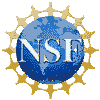0.1. Formal Languages Course Introduction¶
0.1.1. Introduction¶
What we are doing today:
Administration stuff and Course mechanics
Course introduction (OpenDSA Sections 1.1 and 1.2)
0.1.2. Administration stuff¶
I do not handle force-adds. Email to csundergrad@cs.vt.edu.
Go over Syllabus, Homework policies (at Canvas)
0.1.3. Course Mechanics: Canvas¶
Posted homework, homework submission, homework feedback
Post grades
Access to course materials (OpenDSA)
Course calendar, coursenotes, assignments
0.1.4. Course Mechanics: OpenDSA¶
See the “Modules” at Canvas
Content, visualizations
Simulators (OpenFLAP)
Exercises (one part of homework)
Framesets
0.1.5. What you should already know¶
Discrete Math
Proof by Induction, Contradiction
Set theory, relations
Basics of Asymptotic Analysis: Big-oh, \(\Theta\), \(\Omega\)
Basic data structures (Lists, search structures such as BSTs, sorting algorithms, heaps, hashing, and basic graph algorithms)
Survival Tip: A lot of this course depends on understanding notation. Don’t blow this off, its too hard to pick up under stress. Make effort now by reviewing set notation. Be sure you know how to read/do induction proofs.
0.1.6. Process¶
The work in this course will come in three forms:
Weekly homework sets (about 40-45% of the grade)
Two midterms and a final (35% of the grade)
Ideally, doing the exercises and homework will be most of the preparation that you need for the exams.
OpenDSA framesets and exercises (about 20-25% of the grade)
“Framesets” use a pedagogy called “Programmed Instruction”.
0.1.7. What this course is about¶
We will try to understand the limits to what computers can do, at a detailed level.
Hard to reason about an Intel processor with billions of transistors.
Don’t want to reinvent the wheel when you can use tools like regex parser, Flex, Bison.
Computer Scientists have developed many simple models of computation, each of which can be implemented relatively easily in software.
This course is about these various models of computation, how complicated each one is, and what its limits are.
0.1.8. Outcomes (1)¶
By the end of this class, you will be able to answer questions like the following.
Can you write a program to determine if a string is an integer?
Can you do it if your machine had no additional memory other than the program itself? That is, you can’t store any values or look at them again.
Can you tell if a string has an odd number of characters?
Can you do it if you have no working memory?
This issue of working memory might not make sense in the context of a modern computer, but does make sense in the context of simpler computing machines.
0.1.9. Outcomes (2)¶
Can you write a program to determine if a string is a legal arithmetic expression?
Examples:
((34 + 7 ∗ (18/6)))
(((((((a + b) + c) ∗ d(e + f)))))
But, can you do it if if your machine had no additional memory other than the program itself? That is, you can’t store any values or look at them again.
Could you solve this problem (without memory) if you were limited to look at expressions of length 12 or less?
0.1.10. Outcomes (3)¶
Can you write a program to determine the value of a valid mathematical expression?
Example:
((34 + 7 ∗ (18/6)))
But, what memory or computational power is required? Is the ability to recognize if a string is a valid mathematical expression the same level of power required to compute the result of that expression?
0.1.11. Outcomes (4)¶
Can you write a program to determine if a file is a valid Java program?
Can you write a program to determine if a Java program given as input will ever halt?
What types of languages can we represent with Regular Expressions, BNF Grammars, and Context Free Grammars?
What is the relative “power” of a Push-down Automata, a Finate State Automata, a Non-Deterministic Finite Automata, and a Turing machine?
0.1.12. Language Hierarchy¶
By the end you will know how everything in this picture applies to how compilers work, and to how hard a typical language-related problem is to solve.
Note the interplay between languages, grammars, and machines.
0.1.13. Models of Computation, Languages, Machines¶
“Automata” is just another word for “machine”.
We usually represent our machines using graphs (nodes and edges).
Our general strategy is to look at classes of languages along with the “machines” that can process them.
Your job is to understand the limits on these classes
0.1.14. Power of Machines¶
\[\begin{split}\begin{array}{lll} \mathrm{Machine}& \mathrm{Can\ do}& \mathrm{Can't\ do}\\ \hline \mathrm{Finite\ Automata}& \mathrm{recognize\ integers}& \mathrm{recognize\ arithmetic\ expr}\\ \mathrm{(no\ memory)}\\ \hline \mathrm{Push-Down\ Automata}& \mathrm{recognize\ arithmetic\ expr}& \mathrm{compute\ expression}\\ \mathrm{(stack)}\\ \hline \mathrm{Turing\ Machine}& \mathrm{compute\ expression}& \mathrm{decide\ if\ halts}\\ \mathrm{(unlimited\ memory)} \end{array}\end{split}\]
0.1.15. Application: Compilers¶
There are essentially two parts to compilers:
“Recognize” if the program is “correct” [Parsing]
Generate “code” to execute the program. [Code Generation]
The main difference between this course and a compilers course is that we focus only on the first part.
0.1.16. To do by next class¶
Read OpenDSA Sections 1.1 and 1.2 (and do any associated exercises/framesets)
Look at Homework Assignment 1 (due next Thursday), find a partner if you want to
Carefully read the General Homework Instructions page


